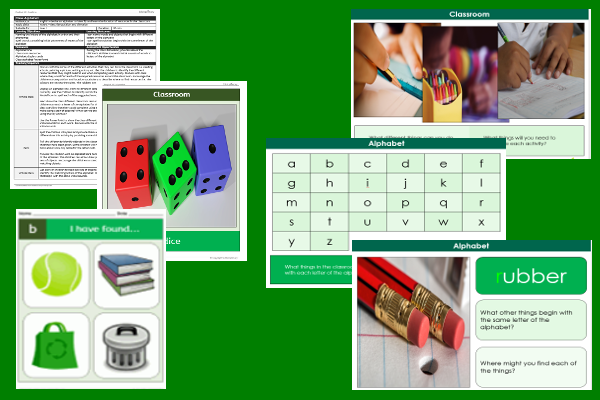Home > Key Stage One > English > Writing Transcription > Alphabet > Lists
Class Alphabet

This English teaching pack for Key Stage One gets the children to explore how to devise and build an alphabet to identify and learn the location of different resources that can be found in the classroom.
The class can practise making lists of classroom tools and equipment that begin with each of the different letters to use when constructing their matching alphabet lists.
Download this teaching pack including a lesson plan, classroom activities and an interactive presentation to explore how to devise and build an alphabet to identify and learn the location of different resources that can be found in the classroom
Activities in this teaching pack include display posters to identify classroom objects that begin with the same letter of the alphabet and a set of cards to select and record objects that can be found in the classroom that begin with different letters of the alphabet.
The interactive presentation gets the children to explore how to devise an alphabet to identify and learn the location of different resources in the classroom.
This lesson is part of an English scheme of work to get the children to practise building lists of objects that have been recorded in alphabetical order to match different themes and topics. There are teaching activities for shared learning, differentiated worksheets to support independent learning and interactive presentations to introduce concepts and key skills.
-

Garden Numbers
Identify and model some of the different calculation techniques that can be used when adding pairs of single digit numbers
-

Summer Stories
Practise composing and presenting narrative stories with familiar settings to illustrate the events and experiences that could happen during the summer
-

Fraction Numbers
Investigate how to use concrete equipment, diagrams and calculations to identify and record the matching fractions of different numbers
-

Family Holiday Lists
Explore how to compile sentences punctuated using commas to list some of the special things that families can use, complete and experience on a holiday
